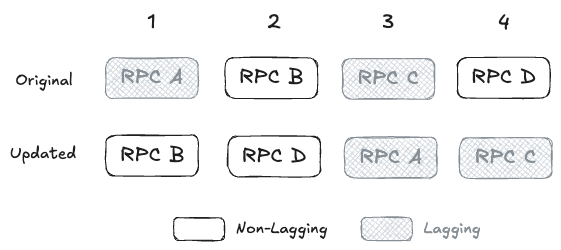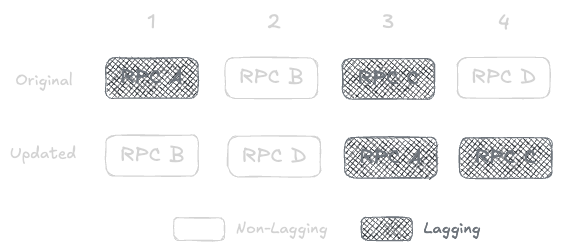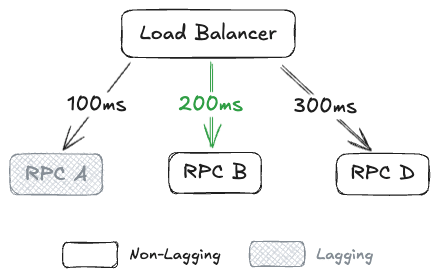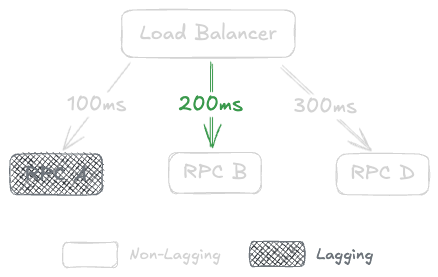Slot Drift Protection
Learn how to leverage Slot Drift Protection to maintain data freshness in your applications.
Slot Drift Protection helps you maintain data freshness in your application by monitoring and deprioritizing endpoints that have drifted away from the tip of the network.
When an RPC endpoint falls behind the tip of the network, this feature automatically adjusts routing to favor more current endpoints.
Configure the following settings to enable Slot Drift Protection,
- Drift Threshold: The maximum number of slots an endpoint can fall behind before being considered "lagging". For example, if set to 100 slots, any endpoint that's more than 100 slots behind will be treated as lagging.
- Exclude Lagging RPCs: A toggle that determines how to handle lagging endpoints:
- When enabled: Completely excludes lagging endpoints from receiving requests
- When disabled: Still uses lagging endpoints, but with lower priority
When "Exclude Lagging RPCs" is disabled:
- For Sequential and Weighted routing:
- Lagging endpoints are moved to the end of your endpoint list
- Endpoints automatically return to their original position once they catch up


- For Parallel routing:
- The load balancer will respond with the fastest response from a non-lagging endpoint
- If only lagging endpoints respond, then the load balancer will use the response from the most up-to-date (or least drifted) endpoint


When "Exclude Lagging RPCs" is enabled:
- Lagging endpoints are completely excluded from the routing strategy until they catch up with the network
- If all endpoints are lagging, the load balancer responds with a
No RPC endpoints availableerror message - Service automatically resumes when at least one endpoint catches up with the network